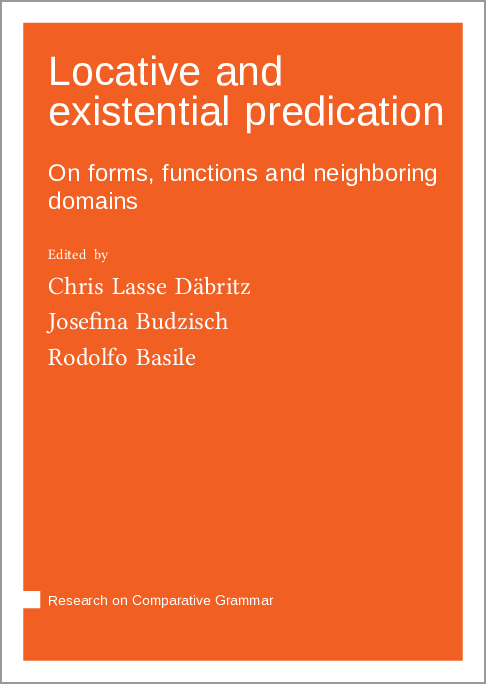We log anonymous usage statistics. Please read the privacy information for details.
Forthcoming: Locative and existential predication: On forms, functions and neighboring domains
Synopsis
Locative and existential predications are fundamental linguistic constructions that exhibit significant formal overlap while serving distinct communicative functions. Locative clauses typically anchor a definite referent to a spatial context, whereas existential clauses introduce new, often indefinite, referents into discourse. Despite their central role in syntactic and typological research, the cross-linguistic diversity of these predications remains largely underexplored. This collective volume originates from workshops held in 2023 at the Annual SLE Meeting in Athens and the International Conference on Historical Linguistics in Heidelberg. It brings together in-depth analyses of locative and existential predications across a wide range of languages, drawing on diverse methodological and theoretical approaches. Rather than imposing a single framework, the volume deliberately allows for variation in how these constructions are defined and analyzed, reflecting the complexity and diversity of linguistic structures. A key theme of the book is the relationship between locative, existential, and possessive predication. Many of the included studies highlight the formal and functional connections between these domains, illustrating how different languages encode possession through structures that overlap with locative and existential constructions. The volume also challenges conventional assumptions about structural distinctions between these predications, showing that in many languages, such boundaries are blurred or even nonexistent. The introductory chapter reviews key findings from prior research and offers a refined typology of locative and existential predications. It also highlights the major insights from the remaining chapters, each of which provides a detailed empirical analysis of these constructions in one or several underdescribed languages. The contributions address (i) the structural and functional properties of locative and existential clauses, (ii) criteria for distinguishing these constructions in languages where formal differentiation is minimal, (iii) their frequency and usage in natural discourse, and (iv) grammaticalization pathways that link locative, existential, and possessive predication. By integrating data from a broad range of languages and perspectives, this volume advances our understanding of locative and existential predication and offers a foundation for future research in typology, syntax, and historical linguistics.
Chapters
-
Introduction
-
Construction-functions versus construction-strategies
-
Locative/existential constructions in Southern Uto-Aztecan languages
-
Locative phrases as arguments or adjunctsExistential and locative sentences in Greek
-
Locative and existential predication contrasts in Gawarbati (Indo-Aryan) and the surrounding region
-
Predlocatives, existentials, and predpossessives in Nenets
-
Language contact and the obsolescence of the Definiteness EffectNew data from Spanish in contact with Catalan
-
‘Be/have’ verbs in historical perspective
-
Transitive have-verbs in possessive and existential clauses in Siberian Uralic languages
-
An information structure analysis of locative, existential, and possessive clauses in Wakhi
-
Distinguishing between existential and predicative possessive clauses in Turkic
-
Spatial relations and valence extensionMultifunctional spatial markers in Mocoví
-
Invenitive-locational constructions in the languages of Europe
-
Posture verbs in locative and existential predication across three Australian languages



